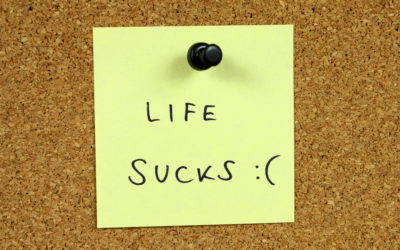One of my favorite thing about programs like this is I don’t just get to speak, I get to listen – and in listening yesterday, I had an insight into something so screamingly fundamental that I’m a little embarrassed at how often I’ve managed not to notice it.
Insights, for those of you not used to thinking in such terms, are “sights from within” – things you see for yourself with such clarity that you know them to be true, even if they fly in the face of what you’ve learned or thought in the past. They can be subtle, like a sudden shift in the lighting of a room that highlights things that were previously in shadow. They can also be direct and a bit confrontational, like my first insight into the nature of the human experience when I realized that babies don’t need therapy and we adults, underneath the noise of our habitual thinking, are still as mentally healthy and well as we were the day we were born.
I’ve never quite known what to call those life-altering insights, though I particularly liked a term shared by one of the presenters this weekend who described it as “being hit in the face by the fist of God”. In the short-term nothing necessarily changes in our lives, but from that moment of insight everything is different.
Here’s what happened:
We were sitting on stage answering questions from the audience about topics ranging from the nature of depression to helping friends get through their exams with more success and less stress. My friend Mara told a story of a lecture she had attended by Syd Banks, the enlightened Scottish welder who first articulated the principles underlying our work.
She was only half-listening, her mind wandering between this and that, when she heard Syd say:
“Everyone is doing the best they can, given the thinking they have that looks real to them.”
Something about that sentence made me sit up and take notice. Despite teaching and writing about the nature of thought for all these years, I’m not sure I’ve ever really seen my innocent complicity in my own suffering before.
Here’s my pattern:
1. I find myself in a situation that I find difficult or problematic.
2. I use my understanding of the mind to better cope with the situation and/or solve the problem.
3. I wake up to the fact that the reason the situation seems difficult or problematic is down to my misunderstanding of the mind.
4. I feel like an idiot.
5. The situation stops looking so difficult or problematic and I move on with my life.
For example, A few years ago, I was dealing with a cash crunch in my business. I found the whole thing quite stressful, but was proud of how my understanding of the nature of thought was protecting me from taking my thinking too seriously. In fact, I even wondered aloud to one of my mentors how business people who didn’t have such a deep understanding were able to handle such stressful situations in their own businesses. (Steps 1 and 2)
“Variably,” he said. “They handle it variably.”
And that’s when it hit me. My understanding of the nature of thought wasn’t helping me to deal with such a stressful situation so much as my misunderstanding of the nature of thought was making the situation look so stressful. To my chagrin, I was actually boasting about how well I was doing at fighting the monster I made up under my bed. (Steps 3 and 4)
From that moment on, the situation just seemed like business as usual and we resolved the cash situation in due course. (Step 5).
The nature of thought is transient yet powerful – it’s an energy that can’t be put into a wheelbarrow but makes mountains out of molehills at the drop of a hat. And the thoughts that are most impactful in our lives aren’t the positive or negative ones in our head – they’re the ones that look like the things we’re having positive and negative thinking about.
Here’s a different kind of example – a picture I took while I was in Finland:

As you can see, it’s the edge of an ice flow stretching out into the sea. Only it isn’t. What looks like a field of ice is made of clouds, and what looks like water is actually the sky below peeking through.
And this is the nature of our experience – no matter how solid our reality looks, it’s still made up of “thought clouds”. And the thing about “thought clouds” is that they form, re-form, and transform on an ongoing basis when we let them.
In other words, it’s only our own thinking that can make a circumstance look so problematic. And the fluid, cloud-like nature of thought means that that if we’re willing to let go of the way we’re thinking it now, fresh new thoughts will come along and make it up differently.
I hope you find this helpful – I realize in rereading it that it might sound a bit complicated or even dismissive of your problems, whatever they may be. The truth is, I’m still a bit “punch drunk” from my insight and I’m sure I’ll do a better job of articulating it in the future.
But here’s the best I’ve got for now:
- You don’t have to believe everything (or indeed anything) you think
- Argue for your problems and sure enough, they’re yours
- You’re never more than one thought away from a kinder, gentler experience of being alive.
With all my love,
![]()





